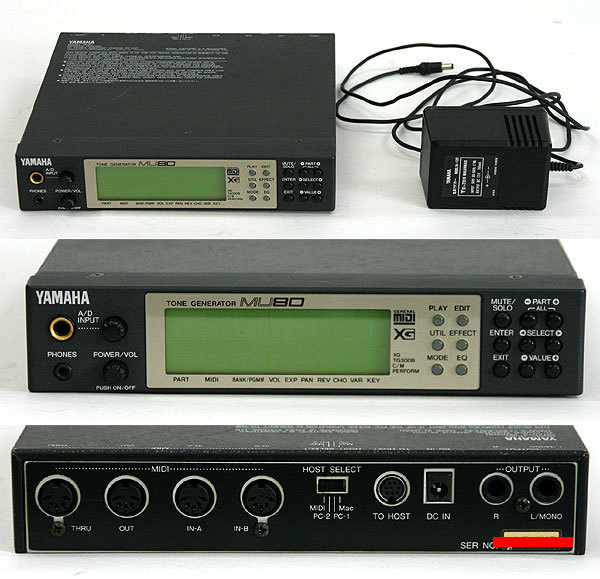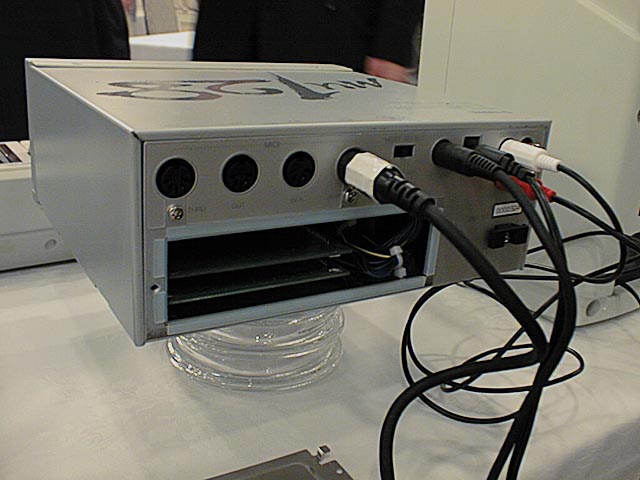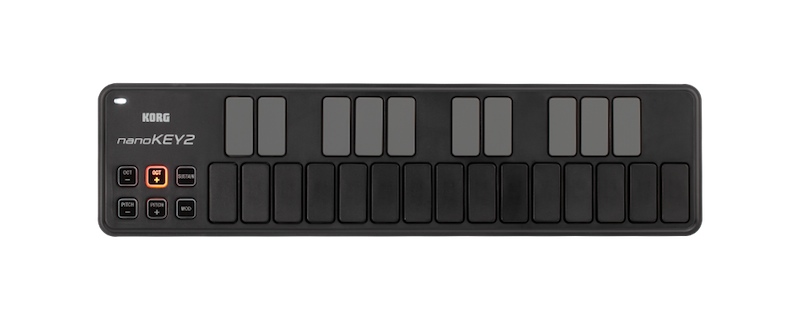Here's a list of gear that I've owned over the years, in chronological order. (The photos below were all taken from the Internet. I do not own the rights to any of them.)
Kawai SR2 Electric Organ
This is my
very first electrical/electronic instrument. I think it cost about
S$3200 at that time. It was my late grandmother who bought this for me
around the year 1989. It is now 22 years old, in my mother's place, and
it is still working perfectly.
The
organ was bought at Kawai Music at Thomson Plaza (which was the school I
took organ lessons from too, at that time). The shop/school is no
longer around.
This organ has high sentimental value to me. Firstly it came from my grandma who is no longer around. With this organ and its MIDI ports, I started playing around with and taught myself to work with MIDI. With its line-in/out ports I used its built-in speakers for Audio CD playback and as the output for my PC soundcard (they sound quite good actually).
Sony MDM-X4
Multi-track MiniDisc recorder and Mixer
My very first prosumer audio gear. I had a 4 track mixer before that, butI it's some strange brand I cant remember. It was thick and bulky but it served me well.
This, Sony MDM-X4 cost me S$1,700. I think I bought it 1996. Its 14 years old! Bought it from Sony Audio Sports Centre at Paradiz Centre, which was what it was called back then. I still have it in my room, not set-up. This was from my own savings. Don't know how I managed to save up that kind of amount. ;)
Korg X2 76 Keys non-weighted
My very first synthesizer keyboard. My mom bought this for me from City Music (at Peace Centre). It was the year 1997 and it cost around S$2700. She also bought me a flight case that was made for the keyboard. That cost about $200. She also bought a keyboard stand (X-shaped), and a sustain pedal for me. I think all in all it cost about $3300?
This old buddy has a built-in sequencer for 12 songs (if I remember correct). I did not fully make use of it because I was already used to sequencing from computer displays.
The Korg X2 has 16 channels and a 32-note polyphony, standard for most MIDI devices back in the day. I've done a lot of MIDI work on this. I was doing a computer music course at City Music School at Peace Centre. (At the music school I keep seeing a poster of the keyboardist from Hall and Oats holding the keyboard. I didn't know who they were at that time, but hey, that's the power of advertising!) I did all my computer music assignments with this.
At that time I was also in polytechnic studying Film, Sound and Video for my diploma. I took up an elective module called Electronic Music, and I was the top in that class. Using this keyboard I sequenced a 9-minute medley comprising different styles of music including mainly rock, pop and swing.
During the course I also dragged the keyboard to school multiple times for audio recording sessions in our audio projects. Multitrack Studio Production and Digital Audio Post Production were part of my final year specialist modules (together with Computer Graphics and Visual Effects).
I also used this keyboard and its sounds to create music for the project that a lot of my other classmates were involved in. Because my course was a film, TV, CG and audio course, there was a huge need for music in many of the students' projects. My name was credited in many fellow students' films at the end of the year.
Around the year 2004, I lent the keyboard to Sandra (Huimin), a colleague from the armed forces. She was going to try it and then decide if she wanted to buy it. After about 2 years she returned it to me. She decided not to buy it, but paid me a small amount for the "loan".
In 2005, I sold this to Gwenda, a keyboardist from my church who needed a keyboard to practice. She also wanted to try computer music. I wonder if she still keeps it.
Yamaha MU80
This piece of equipment I acquired in the year 1998, in my final year of polytechnic. It cost around S$998 at that time. I can't remember where I bought this from. Could be the combo shop by Yamaha at Plaza Singapura.
I used a lot of the sounds for helping people with final projects. I sold this to Jasmine (a fellow course mate in polytechnic) in the end, in the year 1999 or year 2000. It was not because I did not like it. In fact I liked it so much that I sold this in order to get my next tone-generator.
MU80 has a 32 channel and 64 note polyphony. The 32 channels are achieved through 2 MIDI ports of 16 channels each. I bought this as a companion to my Korg X2 sounds. X2 had 16-channels and 32 note polyphony. So coming from there, The added channels and polyphony was a very welcome expansion to the limitations. Using the MU80 and Korg X2 together, I had access 48 MIDI channels and 96 notes of polyphony.
Here is one piece of equipment that stayed with me for a very long time, and very well used. I bought it around the year of 1999 or 2000, right after I sold the MU80 to Jasmine my course mate in polytechnic. It cost me S$1780. A bit painful yes, but it was worth every cent. (The way I used it made it worth every cent). I got this from a Yamaha shop in Suntec City (yes it has been a long time and the shop is no longer around, sadly).
This little power house has as staggering 64 MIDI channels and 128 note polyphony (and hence the name MU128). 64 MIDI channels are achieved through 4 MIDI ports of 16 channels each.
Using it together with my Korg X2, I could address a staggering 80 MIDI channels with a 160 note polyphony, more than enough for any one to use).
Also included are effects in addition to the standard GM reverb and chorus. MU128 included effects like wah-wah, tremolo, brighten (for vocals), EQ, and distortion. 2 of these can be assigned as insert effects, with a send-amount controlled by a MIDI controller number that affects variable effect send.
What was amazing to me at that time was that there are analogue input jacks that allow you to use those effects for external audios sources such as guitars or voices.
There were also a few slots for expansion. There were 3 expansion slots that we can purchase additional PLG expansion cards.
I've used this for services in my church, one or two band competitions, church recording sessions, and in the production of an album for a personal album of local Singaporean artist, where I was the music director.
Apparently the MU series continued to grow, and now there's MU2000 which includes a sampler as well.
Yamaha UW 500
USB Audio / MIDI interface
By now you must be shaking your head thinking I am such a Yamaha fan, I have no room for other brands in my head ;) Yes I saw this Yamaha Audio/MIDI USB interface and I decided to go for it. It was round the price range of S$699 to S$800 I think. This was a promotional price offered by the Combo Shop (by Yamaha, at Plaza Singapura). This was around the year 2002.
It was those few years when USB became increasingly popular for devices such as computer mice and keyboards. Having a USB "soundcard" means that your signal to noise ratio would improve because your soundcard is removed from the system noise, interference and humming producers inside your computer casing.
It also has a to-host cable (I think its proprietary to Yamaha), that can talk to my MU128 to address its multiple ports all at once. If I don't have this, I would have to use a MIDI patch bay, which is a real drain to my wallet and messes up my work space even more, with 1 extra piece of hardware and more cables to run (audio and power).
Korg Triton Le 61-key
After I sold off my Korg X2 to Gwenda, I learnt never to get a keyboard longer than 76 keys. They are huge and cumbersome to move around.
Korg's Triton Le is a good change. It has nice sounds (although more geared towards dance and trance, but you never know when you'll need those). It supposedly has some of the signature sounds from it's big brother, the Triton, which I am used to hearing playing in church. It even has an onboard sampler. I upgraded the sampling RAM too, complete with functions to trim, adjust loop points, and all the other sample editing related functions! Sadly I never got the chance to use the on-board sampler.
I bought the Triton Le in 2004 from City Music at Peace Centre for S$788. They had a promotion going on, and I took advantage of it. Adding the sample ram cost me around S$160. I recommended it to my unit in the Film Unit (part of the armed forces) where I worked, and they bought a unit too. Film unit creates training and corporate videos for the armed services, so they need custom music from time to time.
I have not used this keboard for any kind of serious sequencing and arranging. One thing I find about the sounds in general is that they tend to distort very easily. Piano sounds are thin, and the accoustic instruments usually fall of much faster than I would like.
M-audio Keystation Pro 88
Weighted MIDI Controller
I have been playing in church for about 15 years. I realised I have gotten quite used to playing keyboards like a keyboardist on non-weighted keys, instead of a pianist used to real paino keys. I saw the need to get used to weighted keys again. I saw the Keystation Pro and the reviews. The price was a bargain at S$699. This was in 2004 if memory serves me well.
Besides being a weighted controller, it has a huge number of knobs and sliders, perfect for a remote for music production software. I was solely working with Cakewalk Sonar, and it worked pretty well.
I still have with me in my own flat, but I haven't touched sequencing since I moved into my own flat. I'm thinking of starting again.
Kurzweil ME1
Multi-timbral 32-voice Tone Generator
I bought this during my year-long stay in London, in 2007. When I was there I did not have any music equipment with me. I bought this.
I was thinking of getting something that was strong in the keyboards department. This was the best balance between cost and quality. It was the cheapest tone generator I could find, at £399. At the same time, there were good reviews about the piano suonds, so I bought it.
I've not used this to make any music yet.
Behringer UCA222 U-Control
Ultra-Low Latency 2 In/2 Out
USB Audio and MIDI Interface
I bought this together with the Kurzweil tone generator in 2007, because the Kurzweil ME-1 only has MIDI ports. I bought it for about £23 from Amazon as well. It does what it's supposed to do.
M-Audio Keystation 49
This was £75 from Amazon I think, in 2007. I bought this together with the Kurzweil ME-1 and Behringer UCA222-U-Control. With these gear I managed to set up something for me to play around with in London, to keep in touch with music.
This is an OK keyboard. The keys are a bit filmsy, but I was not a keyboard player with a heavy touch, so it was ok for me.
Korg Nanokey 2
I am now in London the second time round, in August 2011. What was supposed to be a 3-month work period turned into more like half-a-year. I got myself a new laptop (read my visual effects blog) because I realised the netbook I bought could not be used to do anything other than surfing the net on a 9" display. It was an i7 quad core machine.
With
a newer machine came much higher processing power. Thinking of
seriously doing something with my music, I got something much less
cumbersome than the Keystation 49: the Korg Nanokey 2.
It
is not actually a keyboard, but it is a USB input device. It has a
small footprint and therefore easy to carry around. I did not bring a
big luggage so I need to keep things small and portable.
I bought this at City Music (Peace Centre) at S$68.























This comment has been removed by a blog administrator.
ReplyDelete